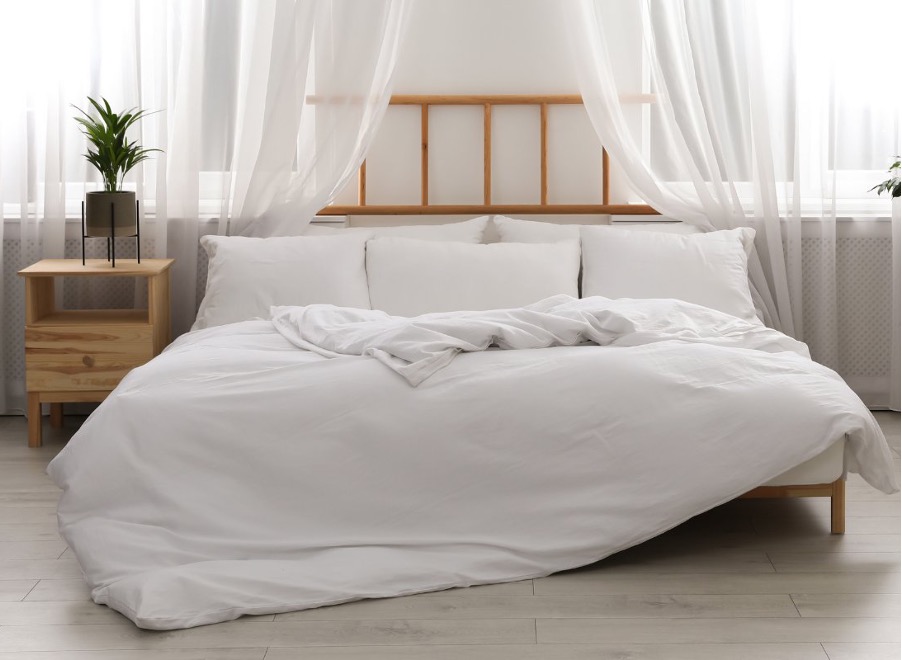
You can spend several hours comparing hundreds of models presented in online store catalogs, but in the end experience bitter disappointment when it turns out that the purchase does not live up to expectations. We offer detailed instructions on which blanket is better to choose. We'll take a look at all the parameters that affect sleep and health—recommendations based on expert and expert advice, as well as consumer feedback.
What to look for when buying a duvet?
Get to know the key characteristics of the products, this will help you choose the right blanket for you.
Sewing method
According to the production technology, 4 types of blankets are distinguished:
Quilted:The through seam passes through all layers of the product. This technology is used mainly for the production of models with a filler that does not crumble: wool, cotton, synthetic fibers or vegetable origin. The seams divide the surface into sections in the form of diamonds or squares (other options are possible).
Cassette:They have solid partitions dividing the blanket into independent compartments into which the filler is poured - its movement from one "cassette" to another is excluded. Such models are good because fluff or silicone balls do not stray in one area, but are evenly distributed over the entire area.
Cluster blankets:Derivatives from cassette ones, they differ in the “chessboard” firmware of the compartments, as a result of which it becomes possible to move the filler inside the product. As a result, by shaking it, it is possible to insulate individual zones, for example, in the area of \u200b\u200bthe legs.
Quilted blankets are the simplest budget option, cassette ones are the best type for “loose” fillers. Blankets-clusters on sale are less common, not suitable for everyone.
Size
The most common models are 140x205 cm in size, the so-called one and a half. Such blankets are good for those who like to sleep separately. An alternative option is a euro-half, 155x205 cm in size. In addition, a series of blankets of atypical sizes is produced: 160 cm wide and 205, 215 or 220 cm long. If you are thinking about which blanket to choose for an adult to sleep, consider lifestyle and marital status. For children of school and adolescence, it is customary to buy one and a half models.
Double blankets have a size of 172x205 cm, Euro-format - 200x200 cm. A separate category is King Size - 220x240 cm, however, it is extremely difficult for them to find a suitable duvet cover. You can also find models 180x210, 200x200 cm on sale, but relatively rarely.
Blankets of standard sizes are preferable - there will be no problems with the purchase of bed linen.
Case material
A number of requirements are imposed on the fabric: hygroscopicity, vapor permeability (ability to pass air), strength. The main purpose of the cover is to prevent the penetration of the filler outside and its pollution. It is desirable that it be pleasant to the touch. Possible options:
Thick cotton:Affordable, environmentally friendly, breathable, does not cause allergies.
Teak:Special fabric for sewing covers for sleeping accessories. Surpasses cotton in wear resistance, dense, prevents fluff and feathers from coming out. Teak blankets last 10 years or more.
Satin:Fine and smooth material with twisted threads that give the fabric a special strength. Has high breathability.
Satin jacquard:It is used when sewing expensive models, it looks like silk, has a pleasant sheen and great strength.
Twill:Cotton material with twill weave, sometimes with the addition of wool fibers. Pleasant to the touch, has a high wear resistance.
Percale:Cotton with long fibers is supplemented with glue - the fabric has an increased resistance to tearing, but at the same time remains soft and pleasant to the body. Can withstand up to 1000 washes.
Natural silk:Used in premium models.
Biosoft is a dense synthetic material.
Quite recently,designer blanketstreated with special impregnations, for example, with an antibacterial or antistatic effect, appeared on sale.
Density
As a rule, this characteristic is indicated on the label. The density of the blanket determines how warm it will be. Classification:
Very warm patterns:Suitable for regions with a cold climate, as well as people who are cold. Density from 420 g/m 2.Warm blankets:Universal option. The density of the product is within 300–350 g/ m2. Gives you the opportunity to warm up quickly, acceptable on cool summer nights.Lightweight models for hot summer days:From 220 to 280 g/ m2.Light blankets:from 200 to 220 g/m 2.
Blankets with a density between 300-350 g/m2 can be used throughout the year. Suitable for students or those on a limited budget.